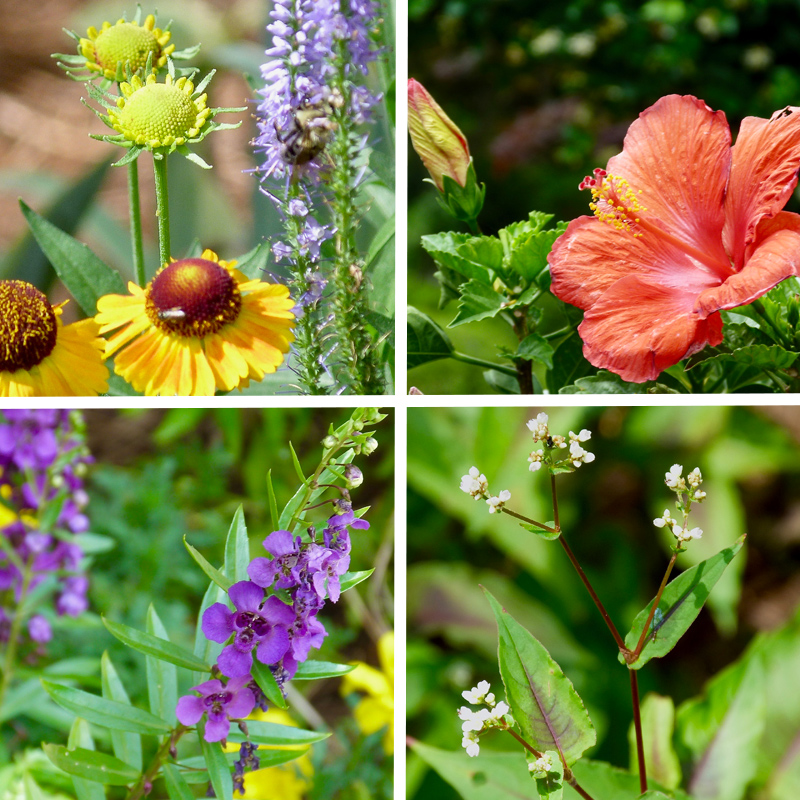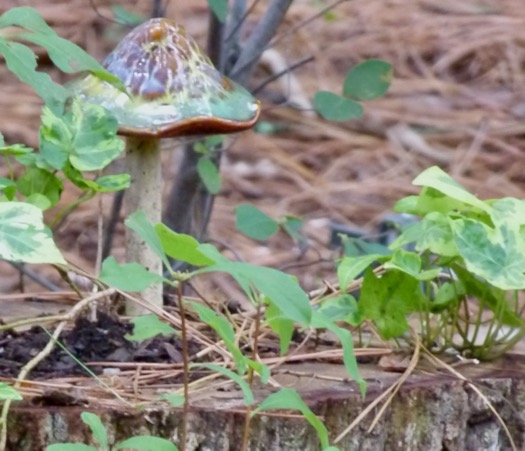Hot Summer in the Garden
 Sunday, August 11, 2019 at 7:00PM
Sunday, August 11, 2019 at 7:00PM It's miserably hot and humid. I walk outside, and within moments I am sweating like an oil rig worker. I wear lots of sunscreen, so the broiling effect is enhanced.
I should not complain. This is completely normal weather for Alabama in August. I have lived here all my life, so I should be used to it by now. Overall, our summer has not been a bad one. The good news is that September is coming.
Meanwhile, most of the garden looks something like this, with little color other than shades of green. Interest comes from various textures and the play of shadow and light:
A little pink shows in the tropical bromeliads plopped down beside a woodland garden path:
A bowl of succulents also provides some subtle color:
Many flowers don't fare well in our August climate. Lots of them look like this:
Bright pink Pentas are an annual that revels in the heat, though in its hanging basket it does need to be watered regularly. It attracts many butterflies and other pollinators, except when I wanted to take a photo! I had to settle for this decorative iron hummingbird:
I have several dwarf butterfly bushes (Buddleia), and they have also been a butterfly magnet through the summer:
Here are more flowers that bloom reliably through the hottest part of our summer: Clockwise from top left: Helenium and purple Veronica; Tropical Hibiscus; Delicate white bloom of Persicaria 'Red Dragon'; Annual Angelonia with yellow marigold in the background.
Clockwise from top left: Helenium and purple Veronica; Tropical Hibiscus; Delicate white bloom of Persicaria 'Red Dragon'; Annual Angelonia with yellow marigold in the background.
In the woodland garden I placed a ceramic mushroom on a stump. Its cap wiggles in the wind. This one is understated, but ornaments are a good way to add a bit of color to a green garden: 
Finally, Tradescantia zebrine, also called Striped Wandering Jew, is an easy-care annual hanging in a shady area near the arbor garden. I love its beautiful variegated foliage. I have lost more than one plant in a hanging basket this summer. Not this one. 



